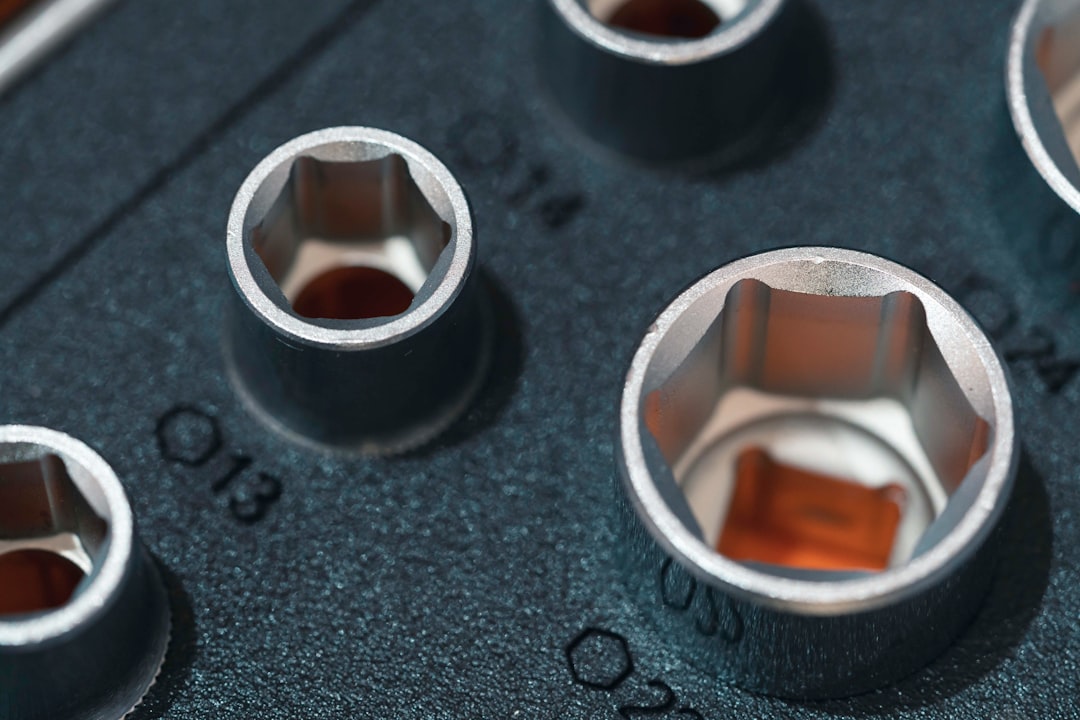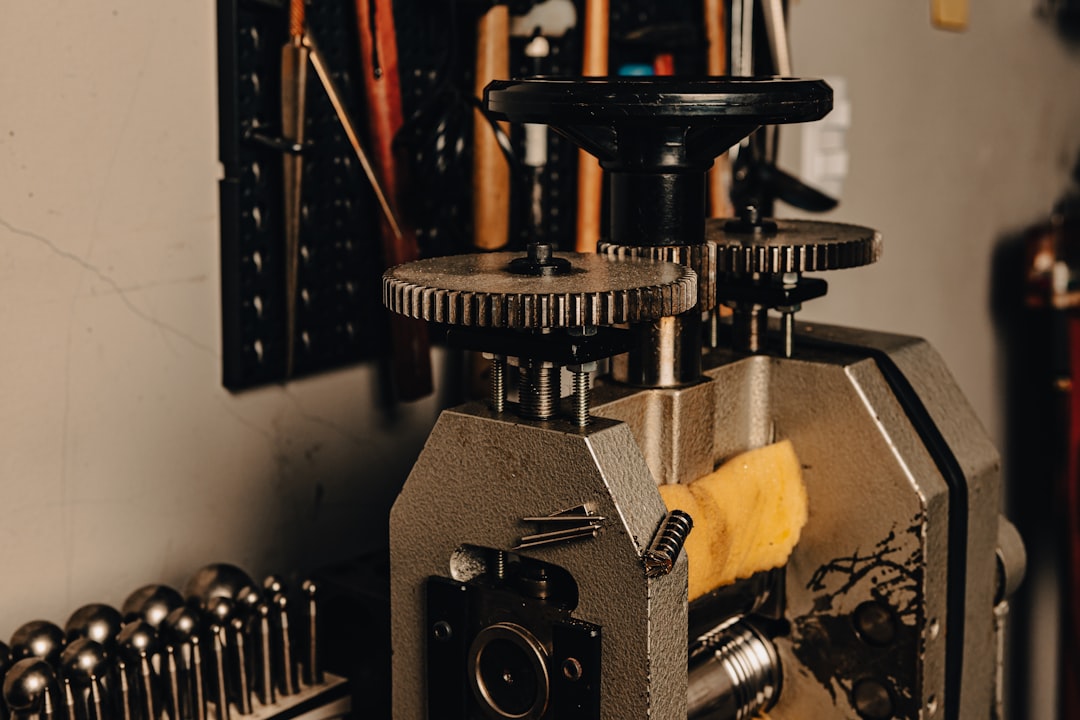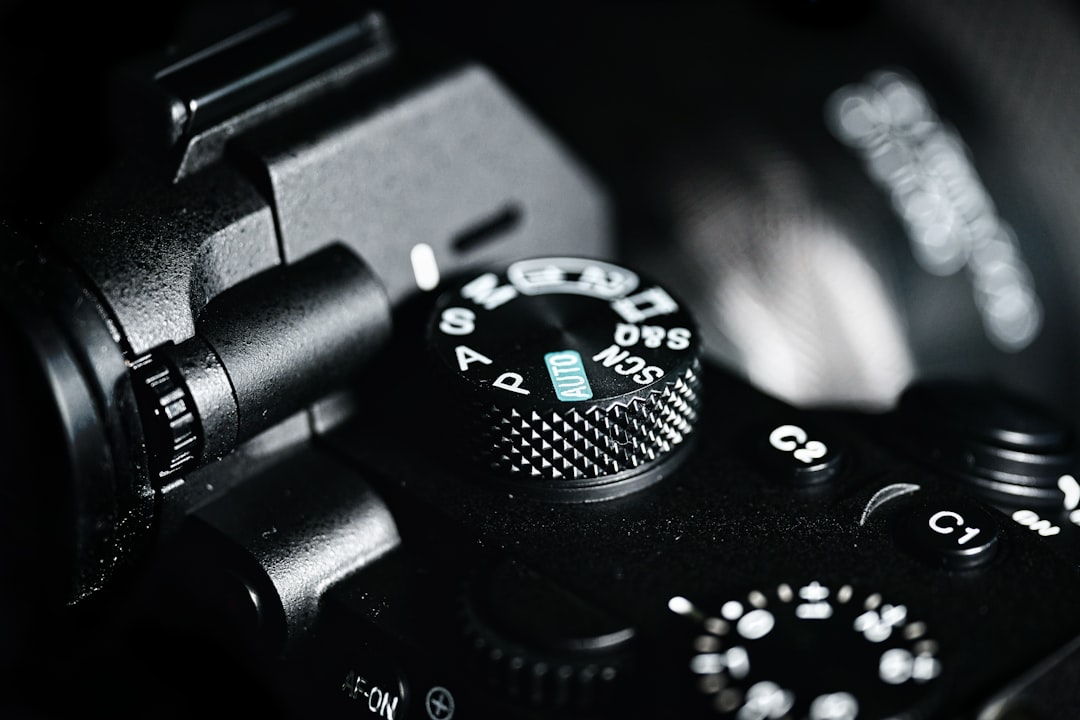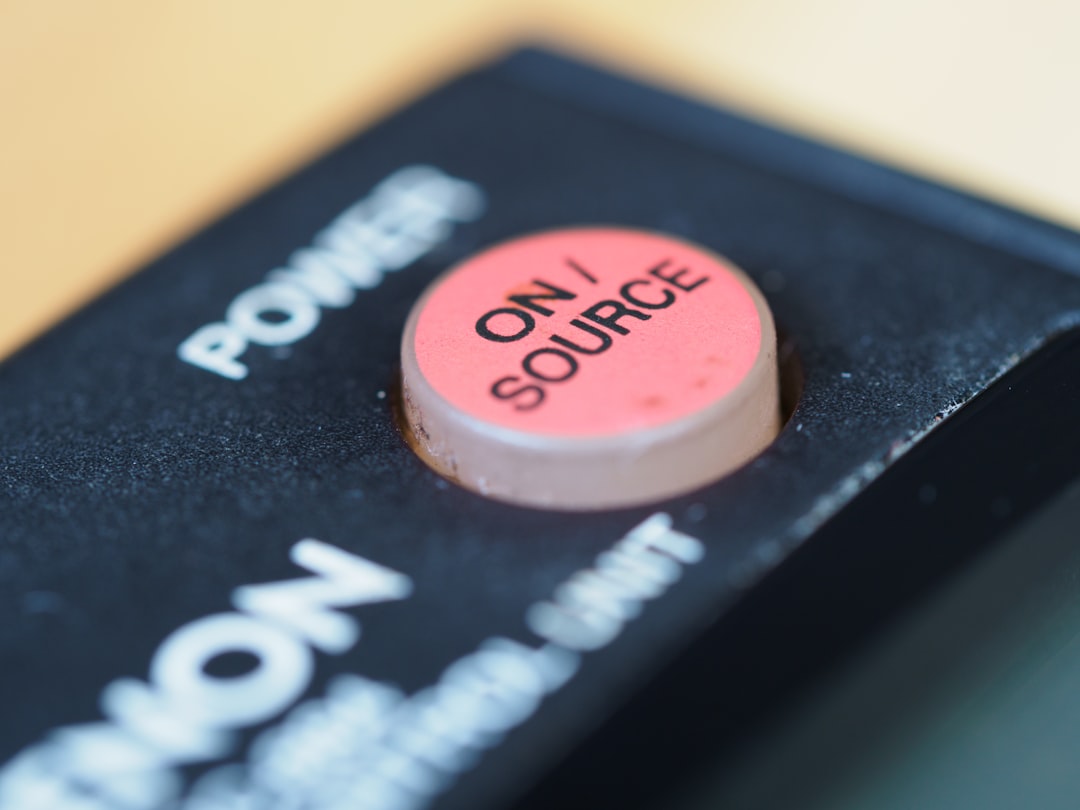

Engage prospects with a scan and streamline customer engagement with FREE QR code marketing tools by Sona – no strings attached!
Create a Free QR CodeFree consultation

No commitment

Engage prospects with a scan and streamline customer engagement with FREE QR code marketing tools by Sona – no strings attached!
Create a Free QR CodeFree consultation

No commitment
In today’s digitally driven marketplace, QR codes have become more than just a quick way to share information; they are a powerful strategy for bridging the gap between physical assets and actionable digital experiences. For optical equipment repair services, QR codes present a compelling method to streamline service workflows, improve customer touchpoints, and facilitate everything from equipment diagnosis to warranty management.
As the demand for fast and reliable servicing grows, providing simple and user-friendly access to support materials and repair booking is paramount. Many optical equipment repair providers find that critical prospects are missed or lost because traditional intake processes, such as phone calls and paper forms, are slow or incomplete. This can lead to losing high-value opportunities, especially when potential customers research services but never formally reach out. QR codes remove friction from these moments, allowing users to access maintenance tips, submit service requests via Google Forms, view repair costs, or book an appointment immediately. This helps capture valuable leads before they slip away and improves the overall customer experience.
The implementation of an effective QR code strategy not only boosts service quality and trust but also enables providers to capture and track engagement across every customer touchpoint. This offers a way to surface anonymous traffic and attribute actions accurately, which are critical steps to optimizing marketing spend and operational efficiency. The following guide demonstrates how integrated QR code solutions can address entrenched industry pain points throughout the entire customer journey, from awareness to completed repair and beyond. Explore the product overview to see how scan analytics and attribution connect.

Many optical equipment repair service providers struggle with missed opportunities, lengthy manual intake, and delayed follow-ups, leading to lost revenue and reduced customer satisfaction. QR codes unify physical and digital touchpoints, enabling faster, more reliable access to information and support using a few simple building blocks.
By rethinking analog processes, teams can unlock efficiency and measurable results. Printed brochures become interactive maintenance hubs; paper forms become pre-filled service requests that feed your CRM; manual sign-up sheets become automated lead captures with instant SMS confirmation. With the right setup, QR-driven workflows reduce lag time between intent and action while preserving data quality.
For example, a unique QR code on a slit lamp or autorefractor can let a technician or practice manager scan and immediately submit a repair request, launch a live chat with a specialist, or access troubleshooting guides. Tools like Sona QR make it easy to automate these flows and sync them to your CRM, ensuring leads are captured and routed for timely follow-up, complete with attribution to the exact code and placement.

Optical repair businesses often lack visibility into who engages with their physical and digital materials. Prospects may browse a printed flyer, pick up a maintenance card, or pause at a repair counter, but if their interest is never captured, they cannot be nurtured. This creates a pipeline full of anonymous demand and missed opportunities. QR codes change this dynamic by transforming static materials into measurable, interactive assets that prompt immediate action.
Speed and simplicity are particularly important for clinics, labs, and hospitals where equipment downtime impacts patient throughput, research timelines, and revenue. Staff do not want to download an app or wait on hold, and they should not need to. A well-placed QR code gets them from problem recognition to the next best step in seconds. See Sona QR’s industry guide for healthcare and related research on optical instruments.
For example, integrating a QR code on a device check-in form reveals which practices are actively considering repairs and what models are most often involved. Sales and service teams can prioritize outreach to high-intent scanners, tailoring follow-up to the device type and use case.

Repair teams often rely on scattered resources that are not tailored to specific equipment or the stage of the journey. To maximize utility and conversions, choose formats that match the task and environment. Teams that do this well see higher compliance with maintenance routines, faster booking, and improved customer satisfaction.
Dynamic QR codes shine in this vertical because equipment lifecycles are long, pricing changes, and documentation updates frequently. A dynamic code on a device label or manual can always point to the latest instructions, which supports safer operation and reduces avoidable service calls.
For instance, a QR code on a lens edger’s protective case that links to maintenance videos offers quick education while silently signaling engagement. High interaction with certain models can inform inventory planning for parts and help your team prioritize proactive outreach.

Despite investment in marketing assets and operational materials, many interactions are not captured at the point of need. Growth comes from mapping QR code placements to the exact moments when customers are making decisions, seeking help, or evaluating options. When you reduce friction at those moments, you capture demand that would otherwise remain invisible.
Start by auditing your current materials and traffic flow. Identify where prospective or current customers spend time: at the service counter, near equipment, in waiting rooms, or at industry events. Then add QR codes with clear, benefit-driven CTAs that match intent and environment. For additional inspiration, review practical QR codes for business ideas.
Optimizing placement in this way turns every physical surface into a measurable channel. Over time, your scan analytics will show where to lean in, which CTAs resonate, and which assets are not pulling their weight.

Lead capture and follow-up are prime challenges for repair companies that rely on calls and paper forms. QR codes create direct lines between equipment, staff, and your service organization, enabling fast action and reliable data capture. The following use cases address common bottlenecks while elevating the customer experience.
Begin with a small set of high-impact use cases, then expand as you learn. Make sure every code has a specific goal, a clear CTA, and a destination built for the context of use.
Each use case should be linked to a measurable outcome such as reduced time to booking, increased completion rate for warranty registrations, or lower inbound call volume. That clarity keeps your program disciplined and ROI-focused.
Every scan is a signal. It captures intent, context, and behavior that you can use to target outreach and tailor offers. By deploying unique QR codes across the journey, you can automatically segment audiences and drive relevant follow-up through email, SMS, or ads.
Optical equipment repair has distinct audience types and needs. A hospital facilities manager scanning a status tracker is very different from a private clinic partner scanning a maintenance plan upgrade. Your segmentation should reflect those differences so that your messaging and timing are always appropriate.
With Sona QR, each code becomes a smart entry point into your funnel. You can apply tags, build audiences automatically, and trigger workflows that mirror the equipment owner’s true needs: emergency repair versus planned maintenance, small clinic versus multi-site hospital, device end-of-life versus routine service. Browse the use case library for deployment ideas.
QR codes are connectors. They tie offline activity to digital actions and data, creating a closed-loop marketing system where every print piece, label, or sign becomes measurable. For optical equipment repair providers, this integration elevates customer experience and makes marketing performance transparent.
Think of QR codes as accelerators for every channel you already use. They help you convert attention into action, capture attribution that used to be impossible, and maintain consistent messaging across complex journeys that involve equipment, staff, billing, and service operations.
A centralized platform like Sona QR lets you manage all codes, monitor performance, and sync scan data with your CRM and ad tools. This creates an offline-to-online funnel in which every scan feeds insight and fuels smarter retargeting and sales processes.
A disciplined approach prevents lost data and late outreach. Before printing or deploying, align each code with a single business goal and make sure the destination is designed for the scan context. For example, a code near a slit lamp should prioritize quick repair intake, while a code on a brochure might highlight services and credentials before asking for a booking.
Equally important is testing. Lighting, device angles, and substrate materials all affect scannability. A code that works under bright fluorescent light might fail in dim exam rooms. Simulate real-world use, and iterate on contrast, size, and CTA placement until scans are effortless.
Select one primary use case to avoid confusing the user. Tie it directly to a measurable outcome such as more completed bookings, higher warranty activation, or lower inbound call volume. Consider vertical-specific scenarios like enabling service requests from equipment tags in busy clinics to reduce the lag between intent and action.
Choose between static and dynamic codes based on flexibility and tracking needs. Static codes work for fixed destinations like a PDF manual. Dynamic codes allow editing the destination without reprinting and capture analytics.
Design affects trust and scan rates. Incorporate your logo, brand colors, and a visible frame. Add a short benefit-driven CTA right next to the code, not just somewhere on the page.
Place codes where your audience makes decisions. Think beyond brochures and signage to equipment labels, van decals, parts packaging, and invoices.
Set up analytics before launch. Tag each code with UTM parameters and destination identifiers so you can attribute scans by location, media, and message.
Advanced platforms now enable teams to trace every scan to a unique lead and tie completed service revenue to the originating code. With Sona QR, these insights flow into your CRM to support an always-improving campaign playbook. For measurement frameworks, see Sona’s offline attribution guide on offline attribution.
Many repair services invest in printed materials or field marketing without clear visibility into which touchpoints drive bookings or repeat revenue. Without attribution, teams struggle to justify spend or prioritize channels. QR analytics change that by turning every physical asset into a measurable contact point and by linking scans to outcomes.
The key is moving beyond vanity metrics. A raw scan count is helpful, but it is insufficient without understanding what happened next. You need to know whether a scan led to a form submission, a scheduled pick-up, or an approved estimate. That requires a platform and process that capture data from scan to sale.
With Sona QR and Sona, an AI-powered marketing platform that turns first-party data into revenue through automated attribution and data activation, you can go further. Connect scans to web sessions and campaigns using multi-touch attribution and unify visitor identity with Sona.
Many providers launch QR codes without a plan for measurement or follow-up. The result is underused assets and limited ROI. A few practical adjustments can transform performance and create a foundation for scale.
Begin by standardizing your program. Decide on design templates, CTAs, naming conventions, and UTM frameworks. Train staff to explain benefits clearly and to encourage scanning at the right moments. Then build automation around scans so every interaction flows into the next step without manual effort.
Creative deployment ideas include QR codes on equipment loaner cases for quick extensions or returns and QR codes on technician badges that open a contact card with appointment availability. With Sona QR, you can build these flows in minutes and track impact from the first scan.
QR codes are more than shortcuts. They are a strategy for modernizing optical equipment repair services, turning every physical surface into a digital entry point and every moment of interest into a moment of action. When implemented with clear goals, thoughtful placements, and integrated analytics, QR codes improve speed to support, reduce friction in booking and status checks, and create a continuous feedback loop that powers smarter operations.
The value compounds over time. As scan data flows into your CRM and marketing tools, you gain a clearer picture of which service lines, device models, and placements drive the best outcomes. That insight informs smarter investments, sharper messaging, and an improved customer experience from first scan to resolved service. With Sona QR, you have everything needed to build, track, and optimize QR programs that connect scans to revenue and turn operational moments into measurable growth. Start creating QR codes for free.
QR codes have revolutionized the optical equipment repair services industry by transforming traditional service processes into seamless, data-driven interactions. Whether it’s streamlining service requests, improving technician access to repair histories, or enhancing customer communication, QR codes replace cumbersome paperwork with instant, mobile-friendly solutions that capture valuable engagement data. Imagine instantly connecting a customer’s equipment to its repair timeline with a simple scan—speeding up diagnostics and elevating service quality.
With Sona QR, you can easily create dynamic, trackable QR codes that update in real time, eliminating the need for reprints and allowing you to monitor every scan’s impact on service efficiency and customer satisfaction. This empowers your business to deliver faster repairs, personalize follow-ups, and ultimately build stronger client relationships. Start for free with Sona QR today and unlock the full potential of QR codes to drive smarter, faster, and more profitable optical equipment repair services.
Common issues include equipment faults identified by error codes, maintenance needs such as cleaning and calibration, device failures impacting patient throughput, and warranty claims requiring registration and processing.
Use QR codes placed on equipment, brochures, and signage to access up-to-date repair guides, submit service requests, view repair costs, and book appointments directly with trusted providers.
Repair costs vary and can be accessed instantly through QR codes linking to repair estimate calculators or service menus, allowing customers to view current pricing without delays.
Regular maintenance reduces preventable faults, supports compliant equipment usage, minimizes avoidable repairs, and helps maintain safe operation with updated instructions accessible via QR codes.
QR codes on devices provide access to troubleshooting guides and maintenance tips, enabling users to self-serve answers for minor issues and identify when professional repair is needed.
Use Sona QR's trackable codes to improve customer acquisition and engagement today.
Create Your FREE Trackable QR Code in SecondsJoin results-focused teams combining Sona Platform automation with advanced Google Ads strategies to scale lead generation

Connect your existing CRM

Free Account Enrichment

No setup fees
No commitment required

Free consultation

Get a custom Google Ads roadmap for your business






Launch campaigns that generate qualified leads in 30 days or less.
